Note: R-Values that are stated throughout the site are averages for the type of insulation product. Manufacturer's specific R-Values may vary for a type of insulation. R-Values marked on packages or quoted by specific manufacturer's should be considered as correct.
Overview:
With today's high cost of energy to heat and cool homes it has become imperative to reduce the heat energy consumed by every homeowner.
Insulation is sold based on its R-Value. The R-Value of insulation is the measurement of the insulations ability not to transfer heat. Higher R-Values provide better insulating qualities.
When reviewing insulation it is important to read labels and manufacturers' specifications closely. Some manufacturers and some products specify an R-Value based on an inch of the product's installation. This is very common with loose fill type insulations, because the end R-Value is only relative to how much product you use. Whereas preformed insulation such as foam and batts will quote insulation as a function of the finished product.
Before You Insulate:
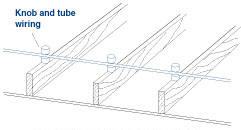
Figure 1 - Knob & Tube Wiring
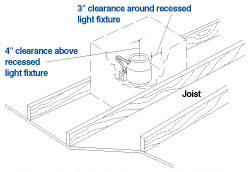
Figure 2 - Protecting a recessed light fixture.
- You must prevent any air leakage from the living quarters of your home into the attic before you install insulation. Failure to do so could cause humidity to condense in the attic space which will create moisture problems that will create damage to the ceilings of the living quarters and damage to the wood rafters in the attic.
Wiring:
- Any old knob and tube wiring (Figure 1) must be replaced prior to installing the insulation.
You should also inspect all wiring and replace any that might be frayed or damaged.
- There are two styles of recessed light fixtures. Those that can be covered with insulation and those that cannot. There will be a label on the inside of the light bulb can or on the junction box that defines the style. In order to cover the recessed light fixtures with insulation they must be IC (insulation contact) rated. If they are not rated for insulation contact you cannot allow the insulation to touch the fixture on the sides or the top (figure 2).
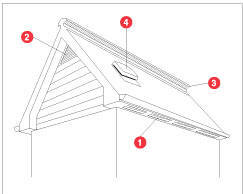
Figure 3 - Types of ventilation.
1) soffit vents; 2) gable end vent;
3) ridge vent; 4) roof vent
Attic Ventilation:
- Adequate attic ventilation is extremely important in order to remove excess humidity in the winter and to exhaust excess heat in the summer.
- roof vents and roof vent fans
- gable vents and gable vent fans
- soffit vents
Additional information on: Attic ventilation
The ratio for proper venting is 1:300, whereby for every 300 square feet of attic floor area you will require 1 square foot of net free ventilation area. For calculation purposes consider that the net free value is equal to 50% of the size of the vent. (If using a powered vent fan, consult the manufacturer's specifications for area coverage).
Additional information on Calculating attic ventilation.
It is important to remember that a vent fan needs to draw air into the space in order to exhaust air. Hence, one vent fan with no additional vents will lead to a disaster). Ventilation devices (Figure 3) can be a combination of:
Roof Ventilation:
Repair all roof damage before insulating. This includes rotted boards, shingles and flashings.
Insulation Installation Guidelines:
Do not block soffit vents with insulation - This is a common error, even with professionals who are in a rush to complete the installation of the new insulation.
If installing loose fill insulation install baffles at the outside edges of the floor joists to protect the vent openings (Figure 4).
If you are installing batts allow at minimum 2 inches between the visible side of the roof sheathing and the insulating batts (Figure 5).
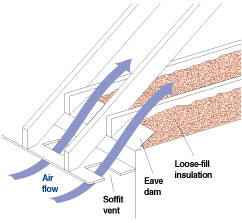
Figure 4 - Loose fill insulation around eaves
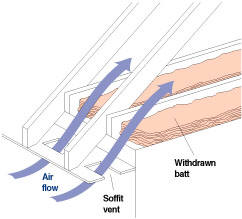
Figure 5 - Batt insulation around eaves
Safety - When installing insulation it is important to wear adequate safety products including safety glasses or goggles, dust mask or respirator, work gloves and coveralls.
